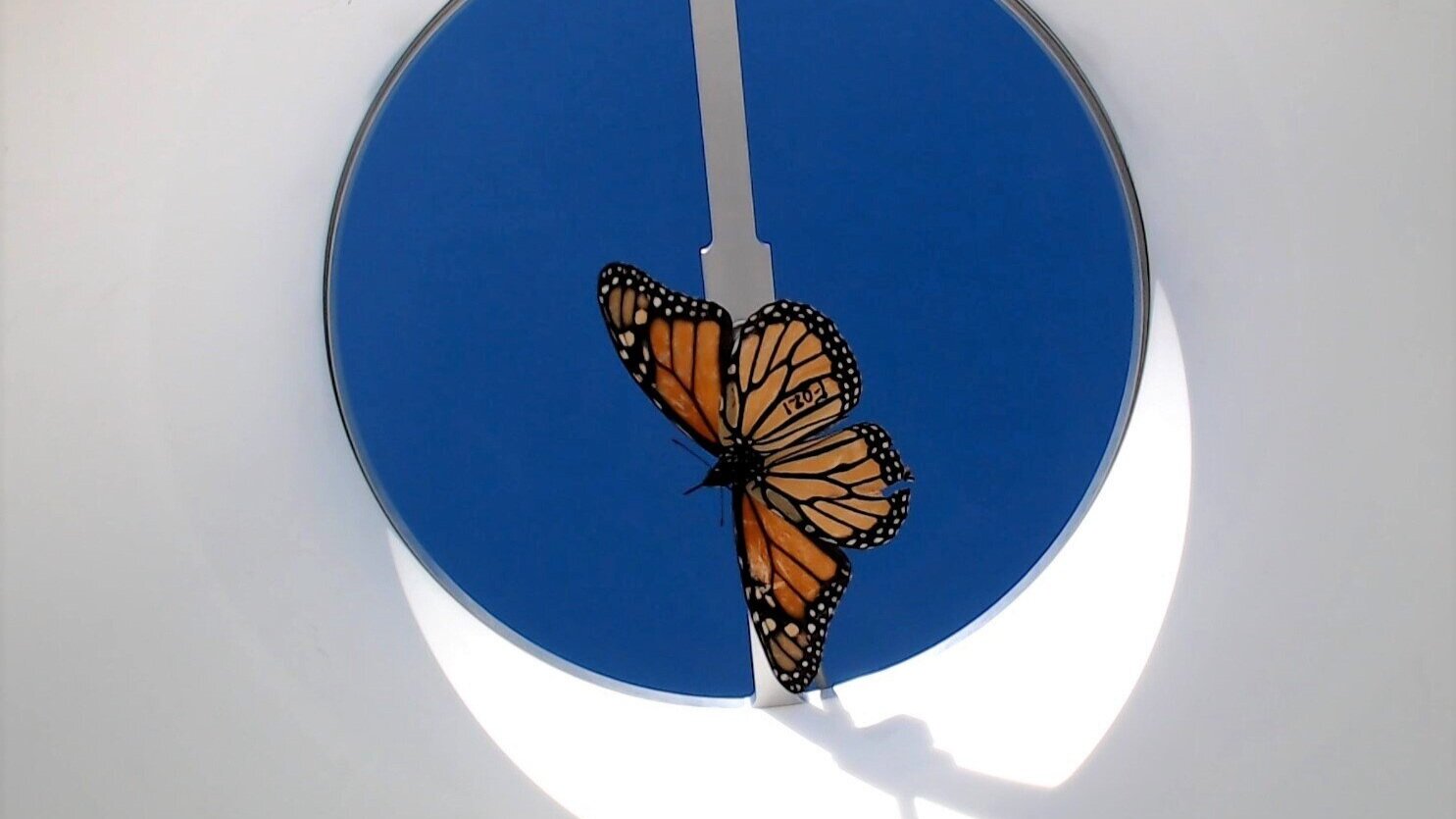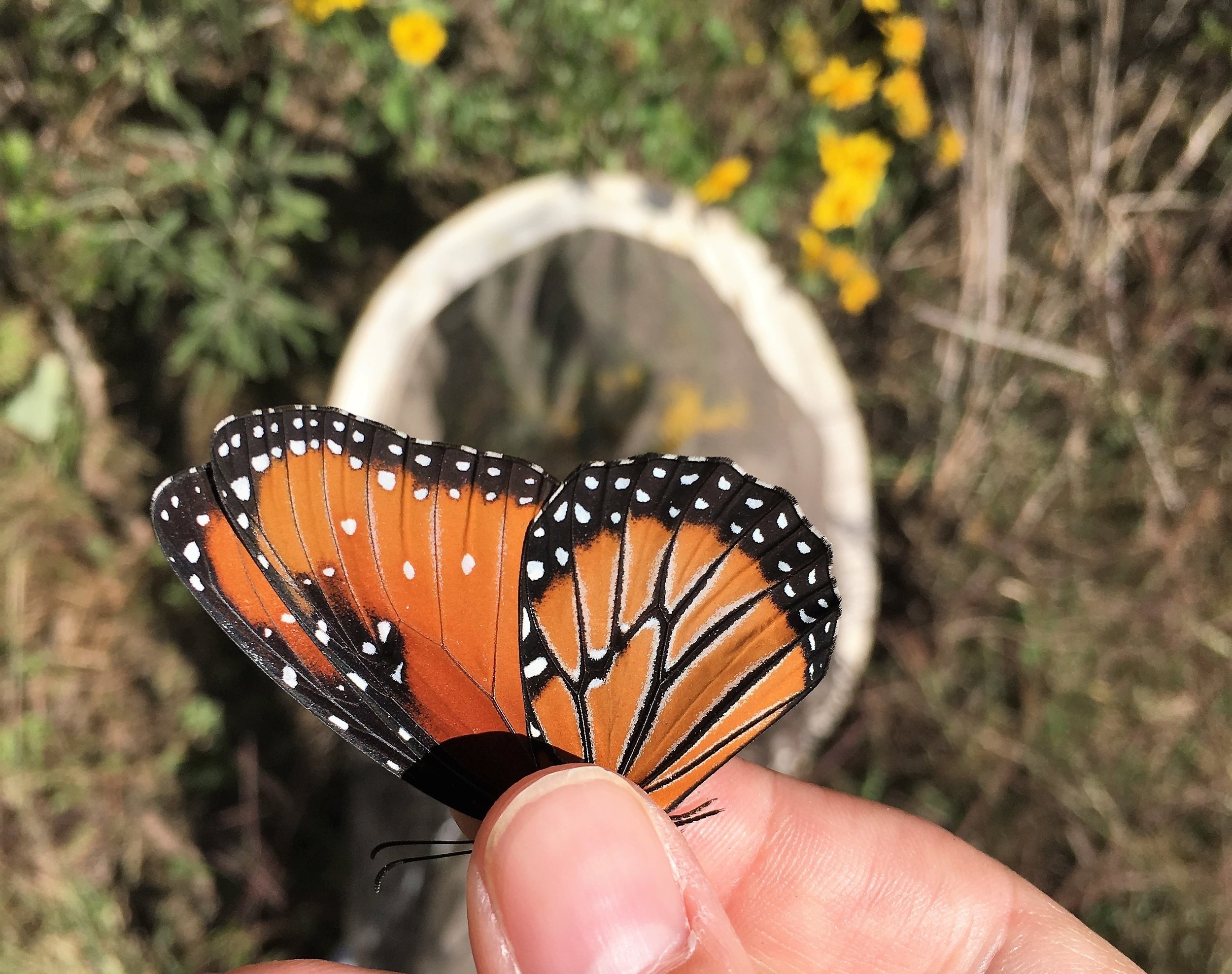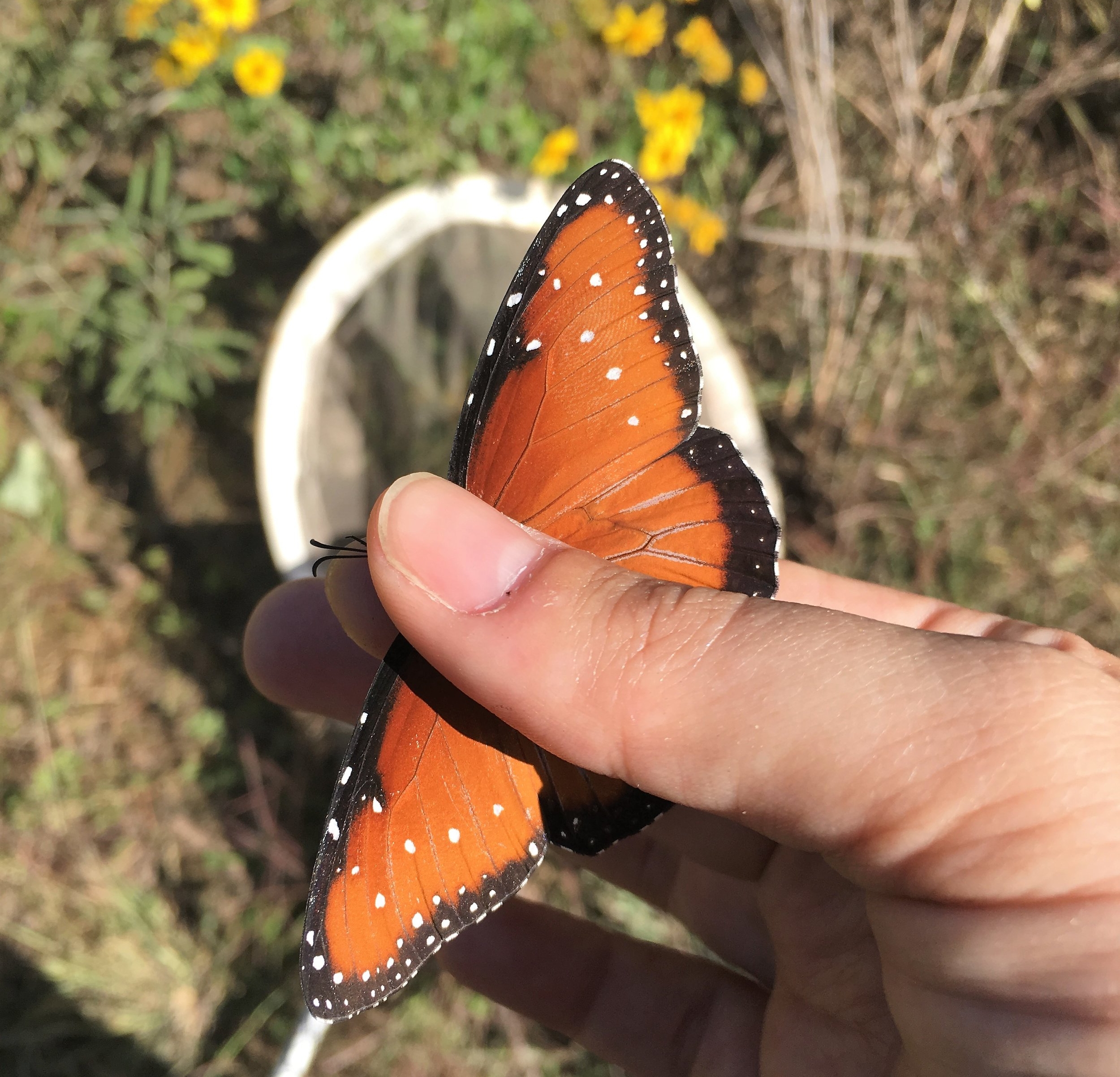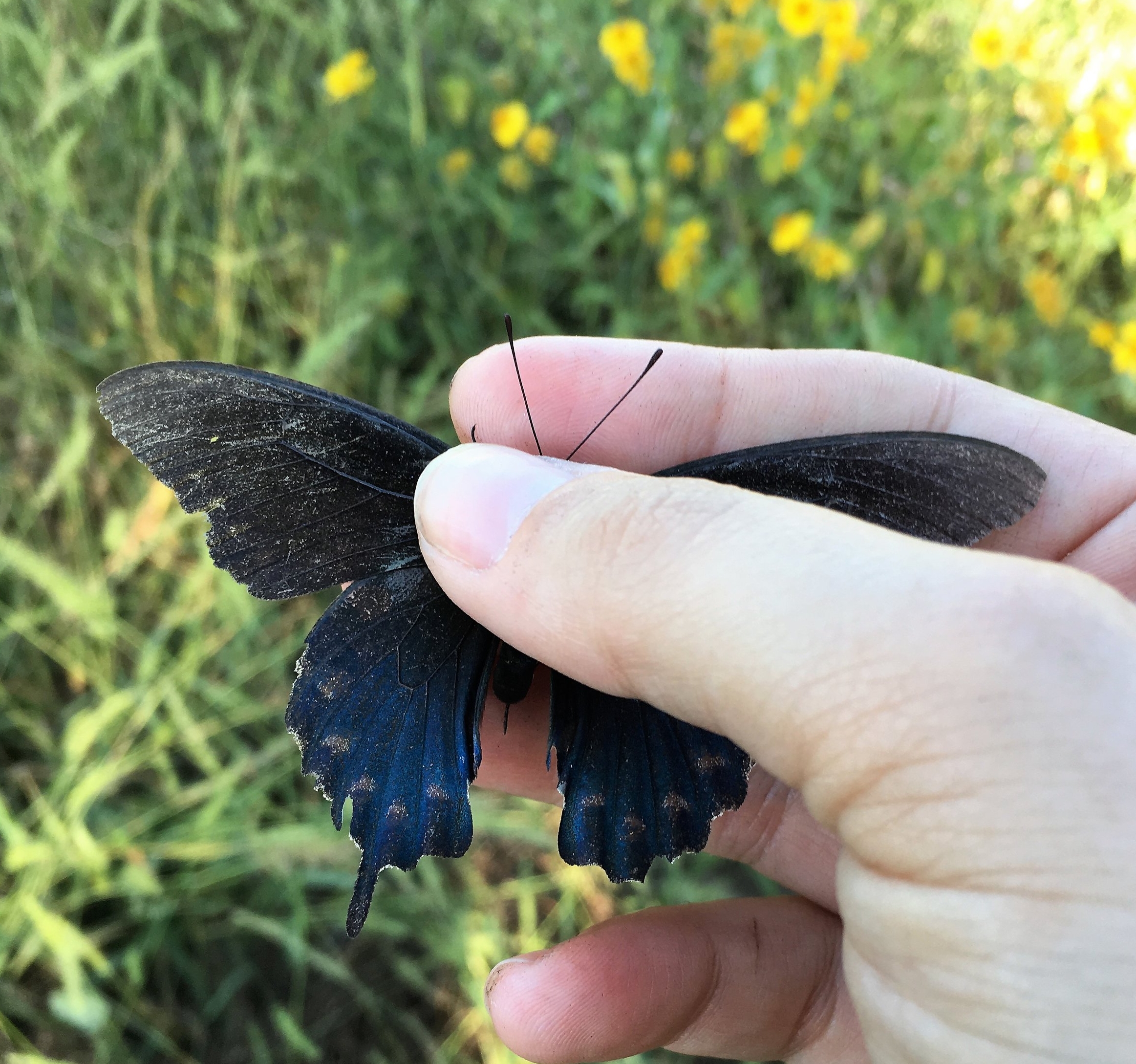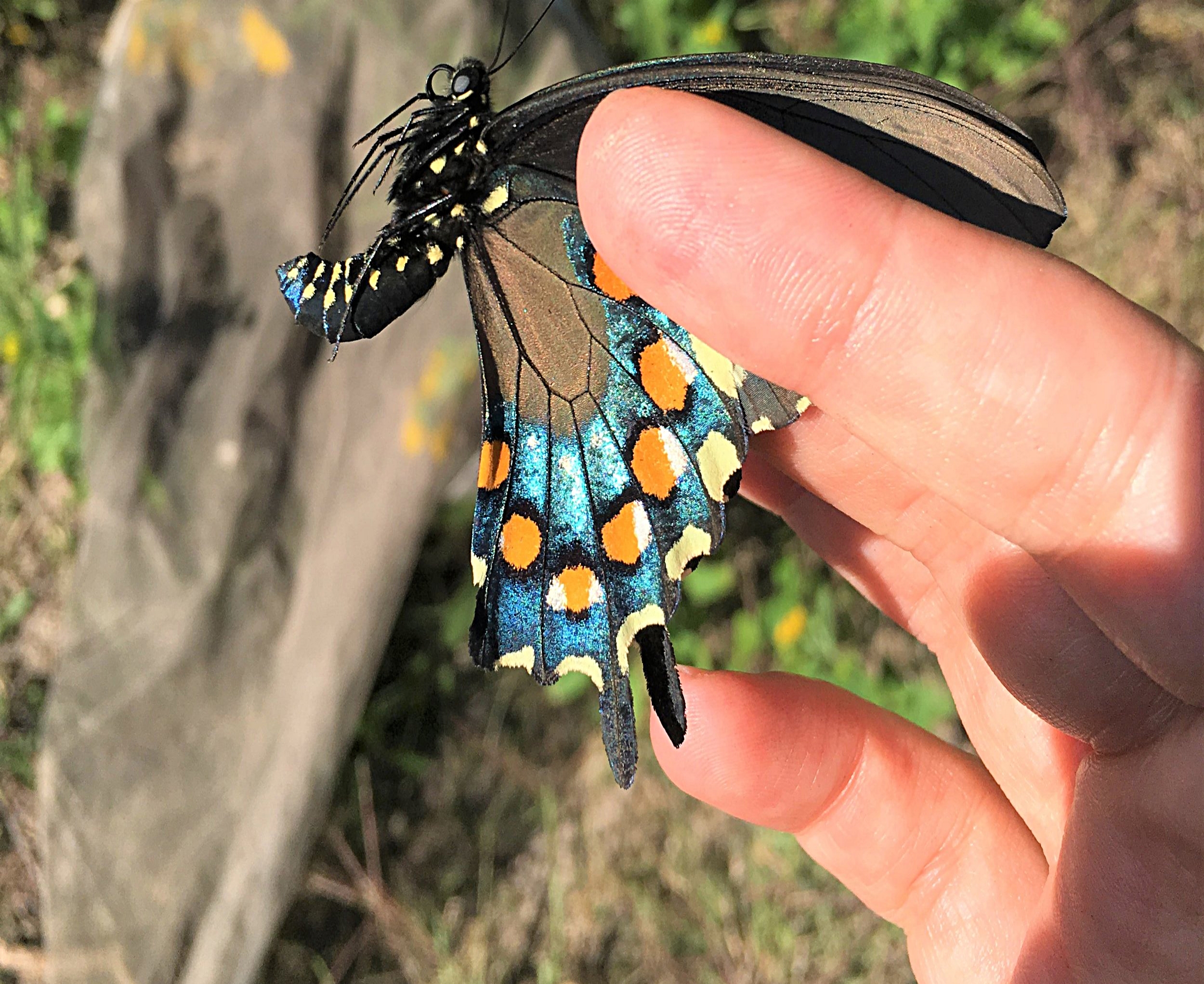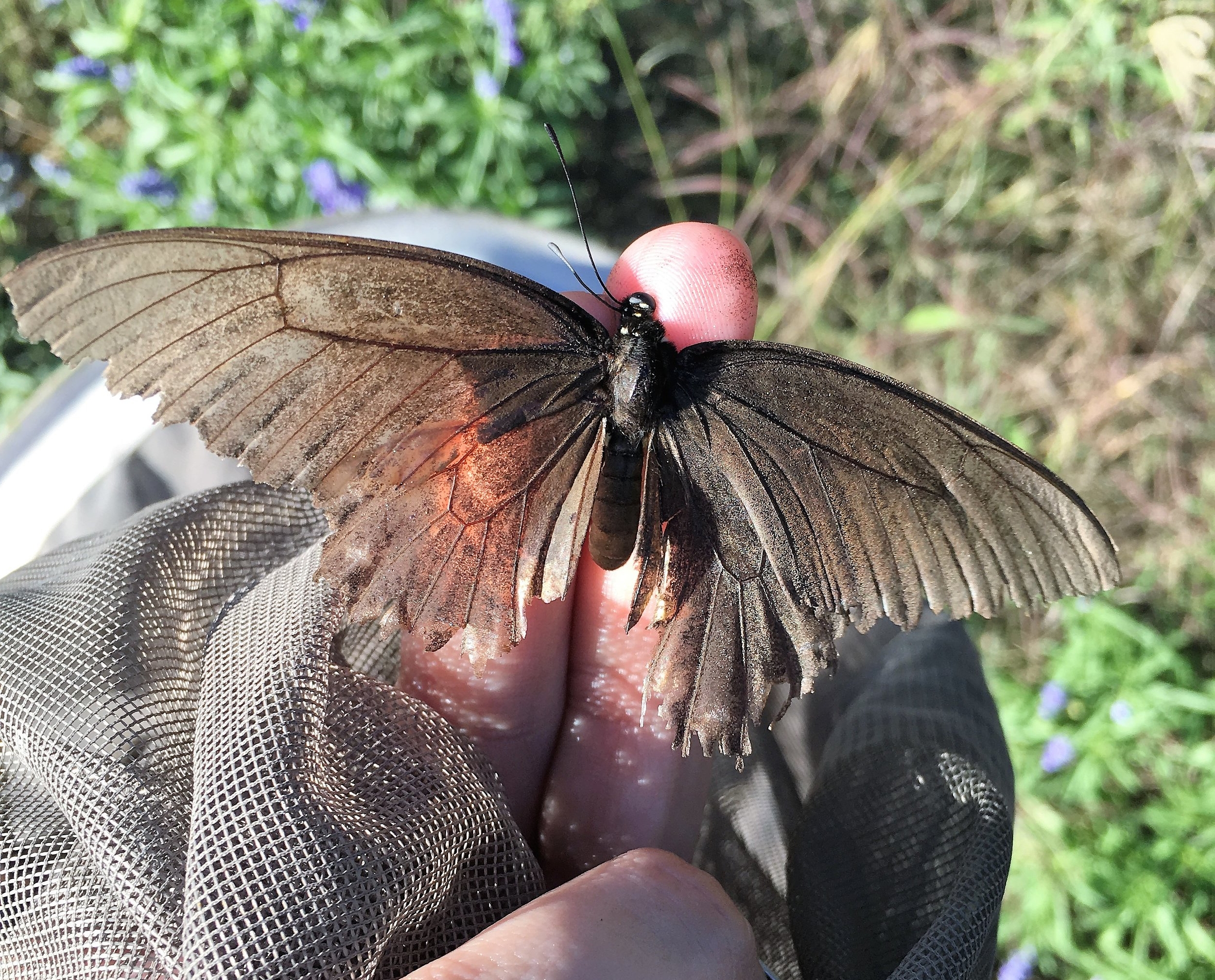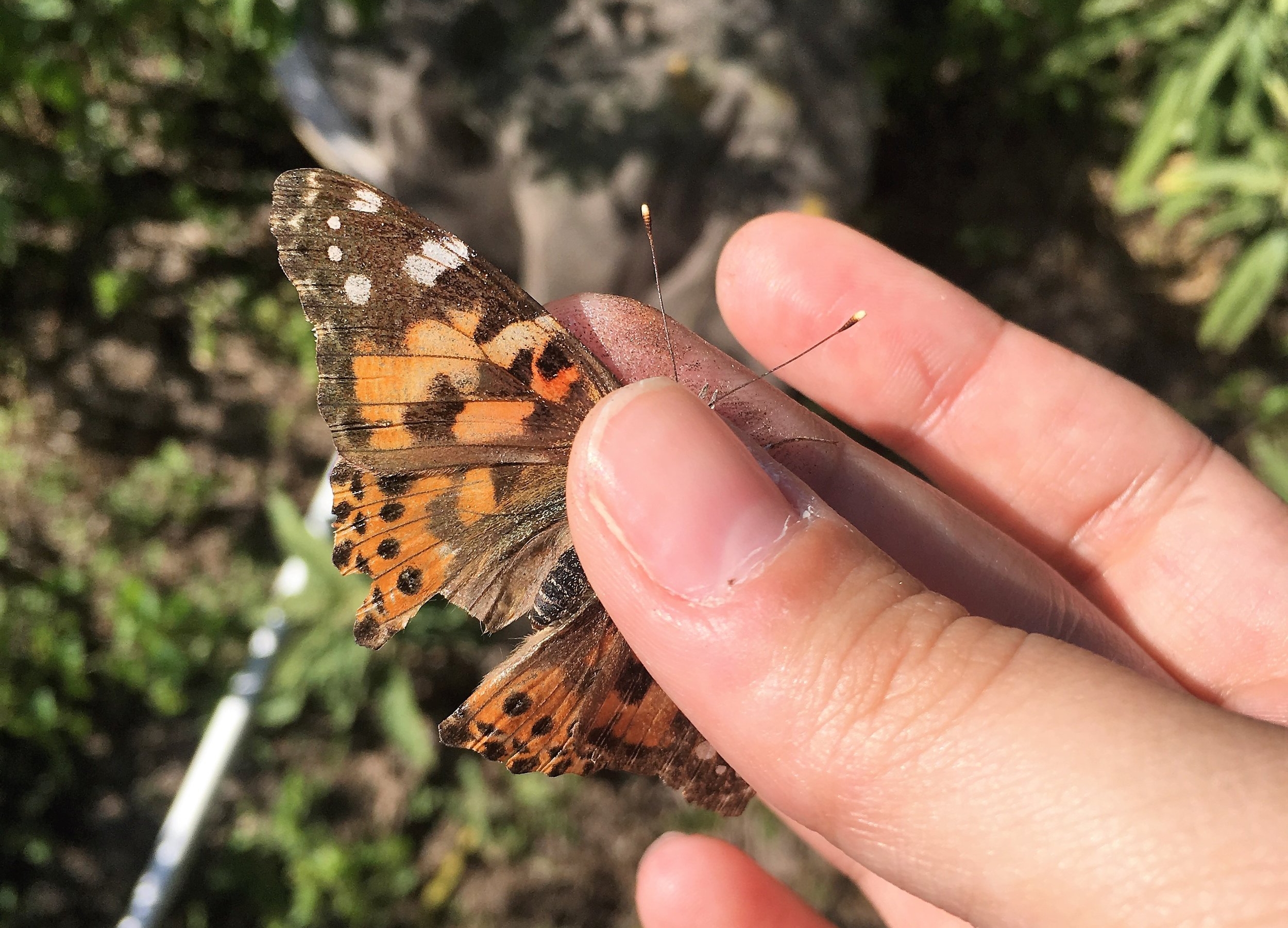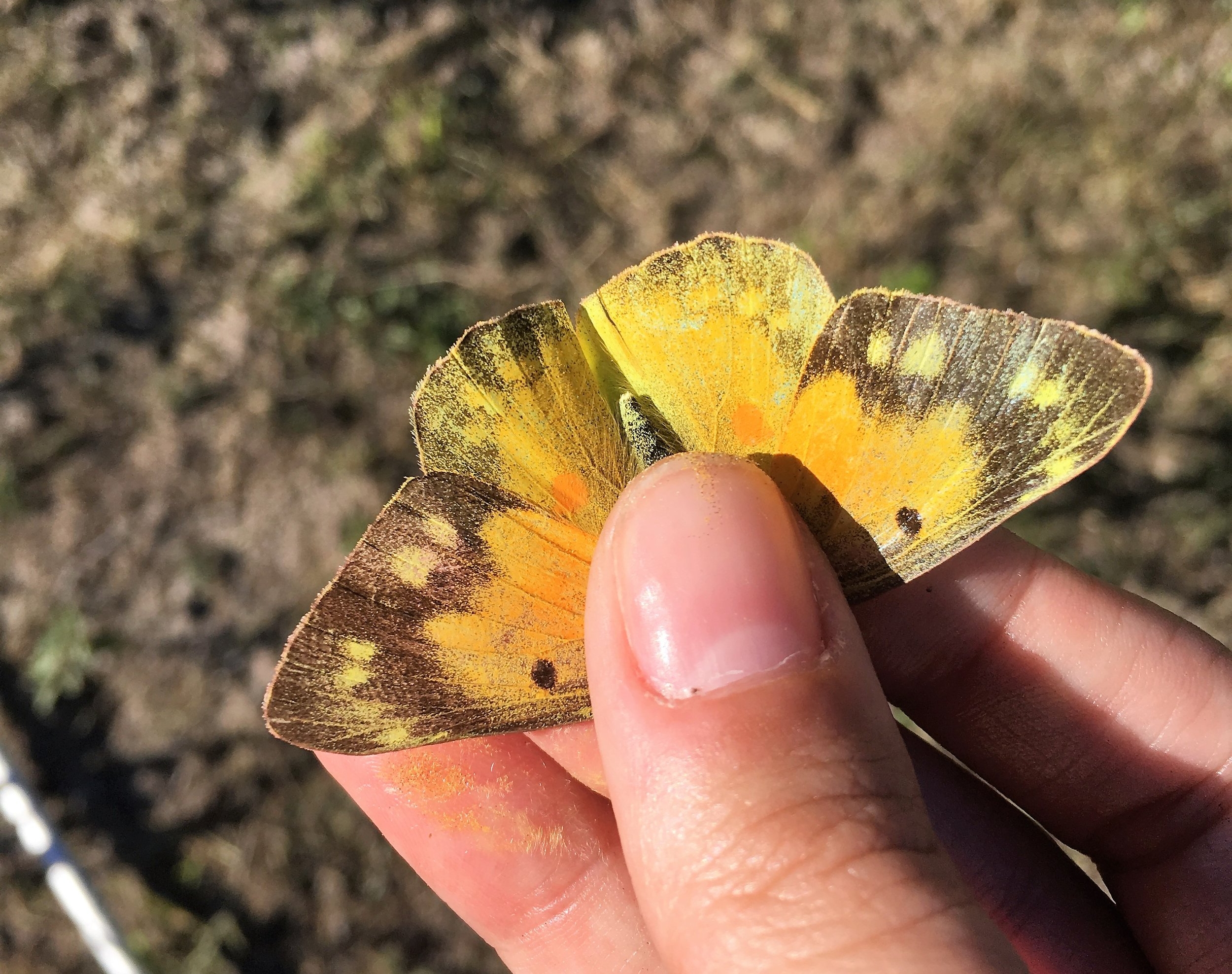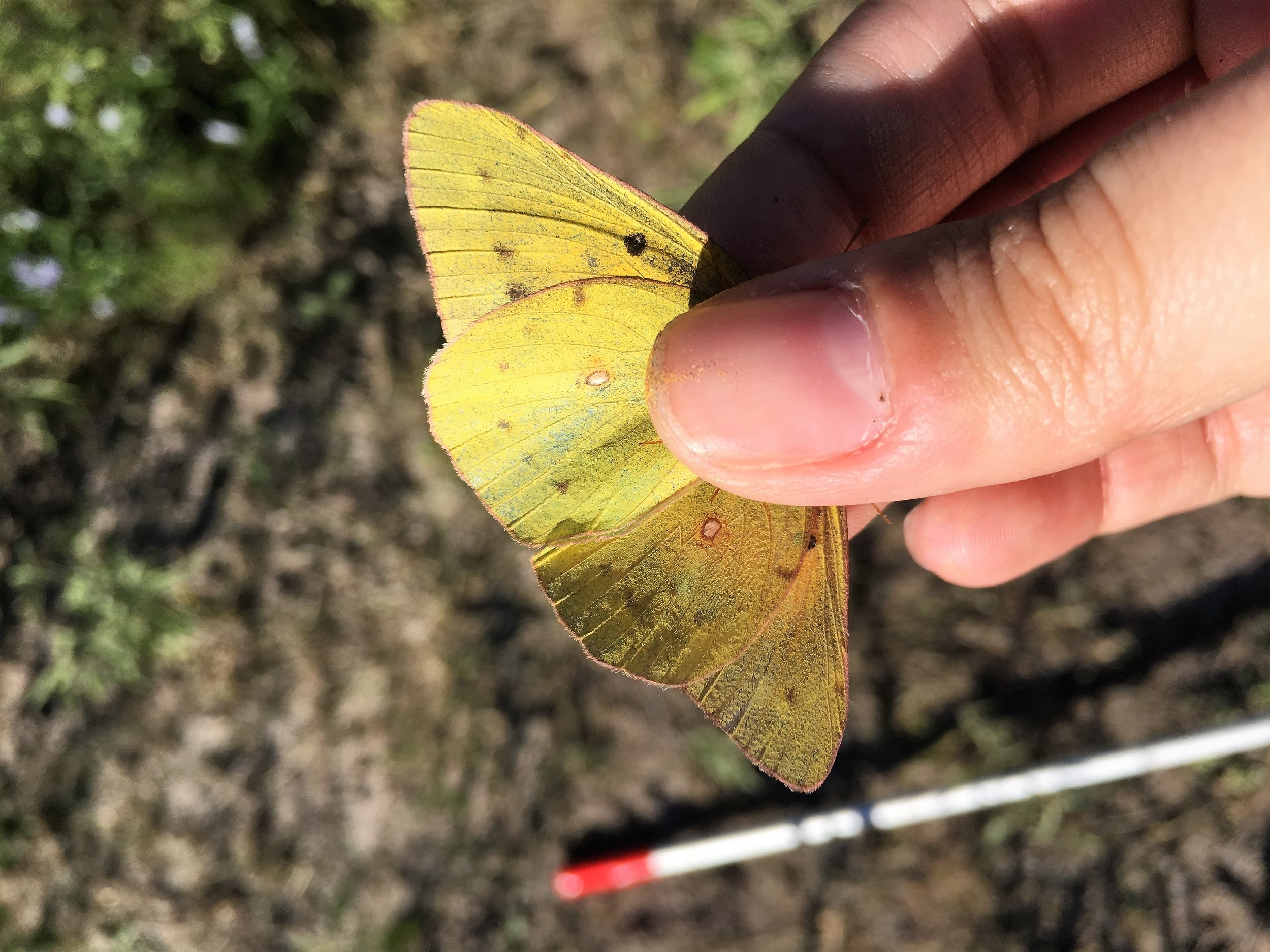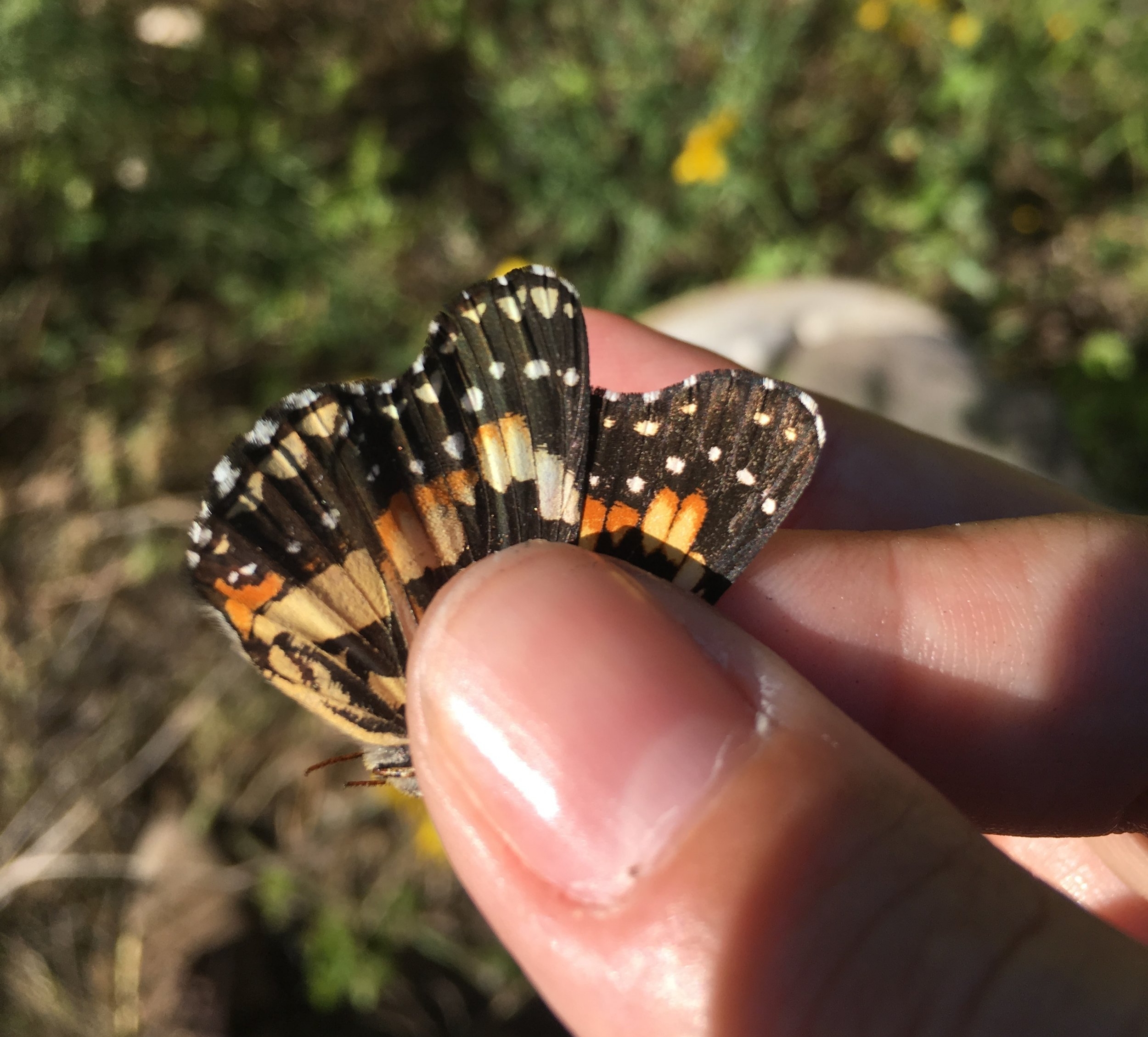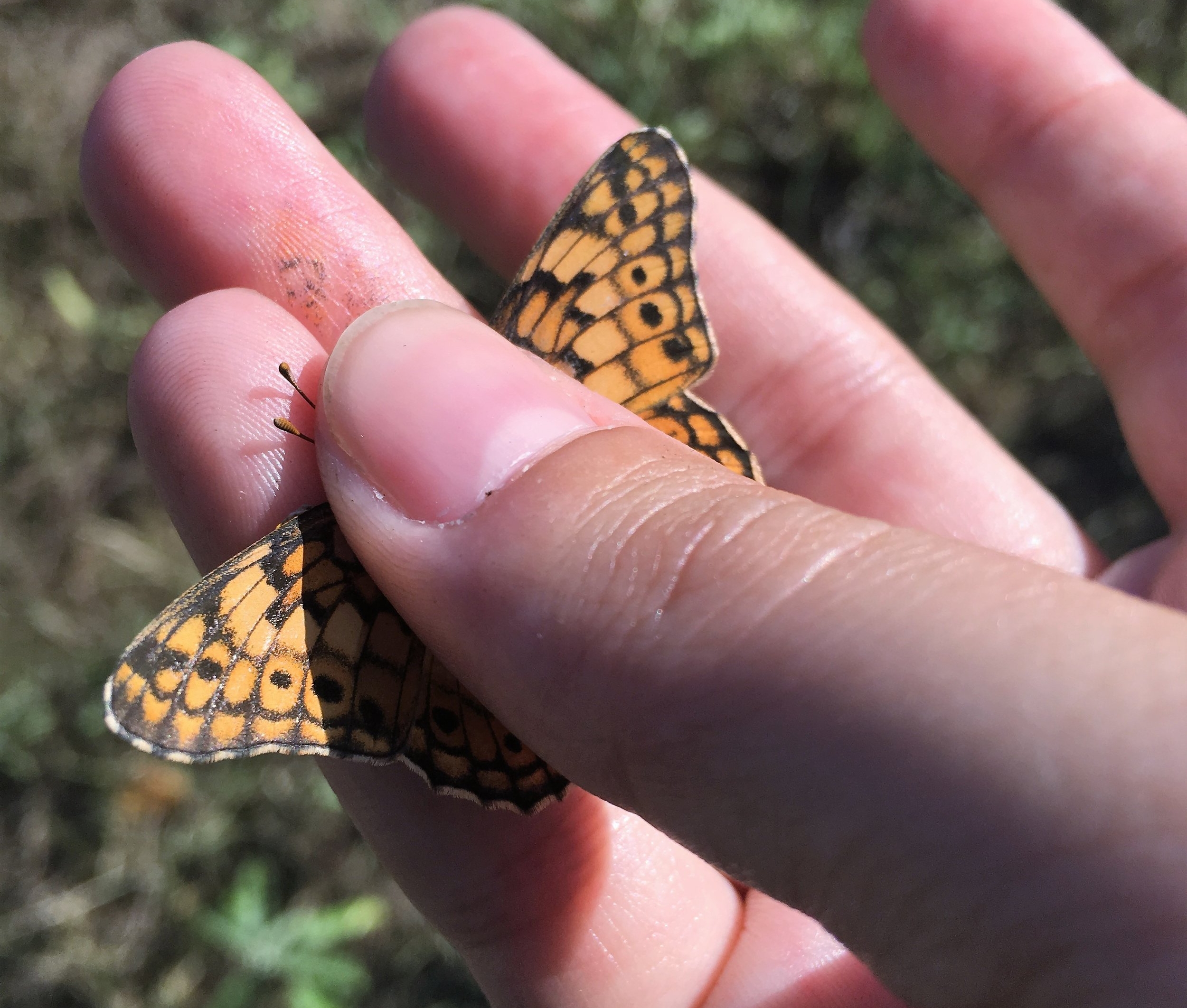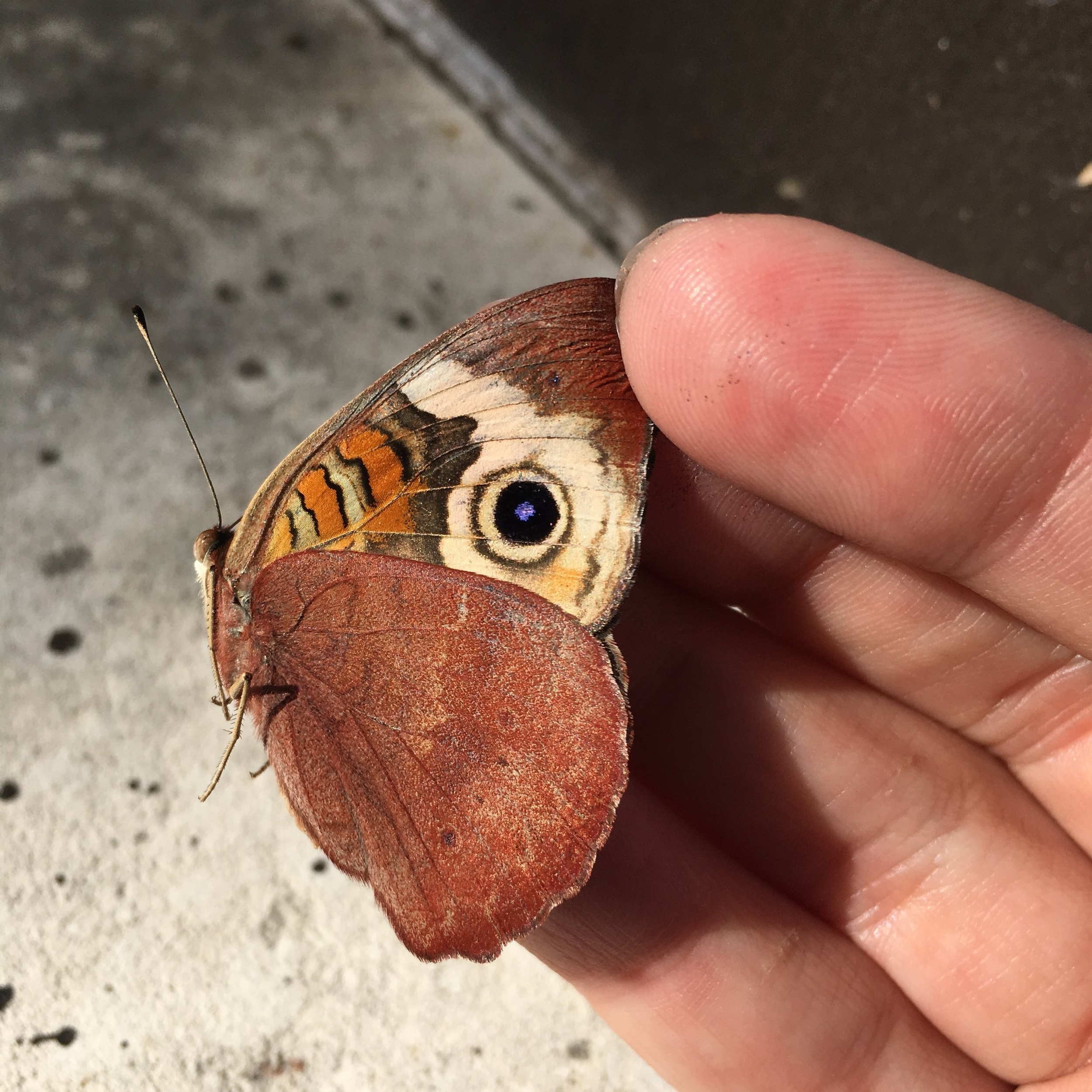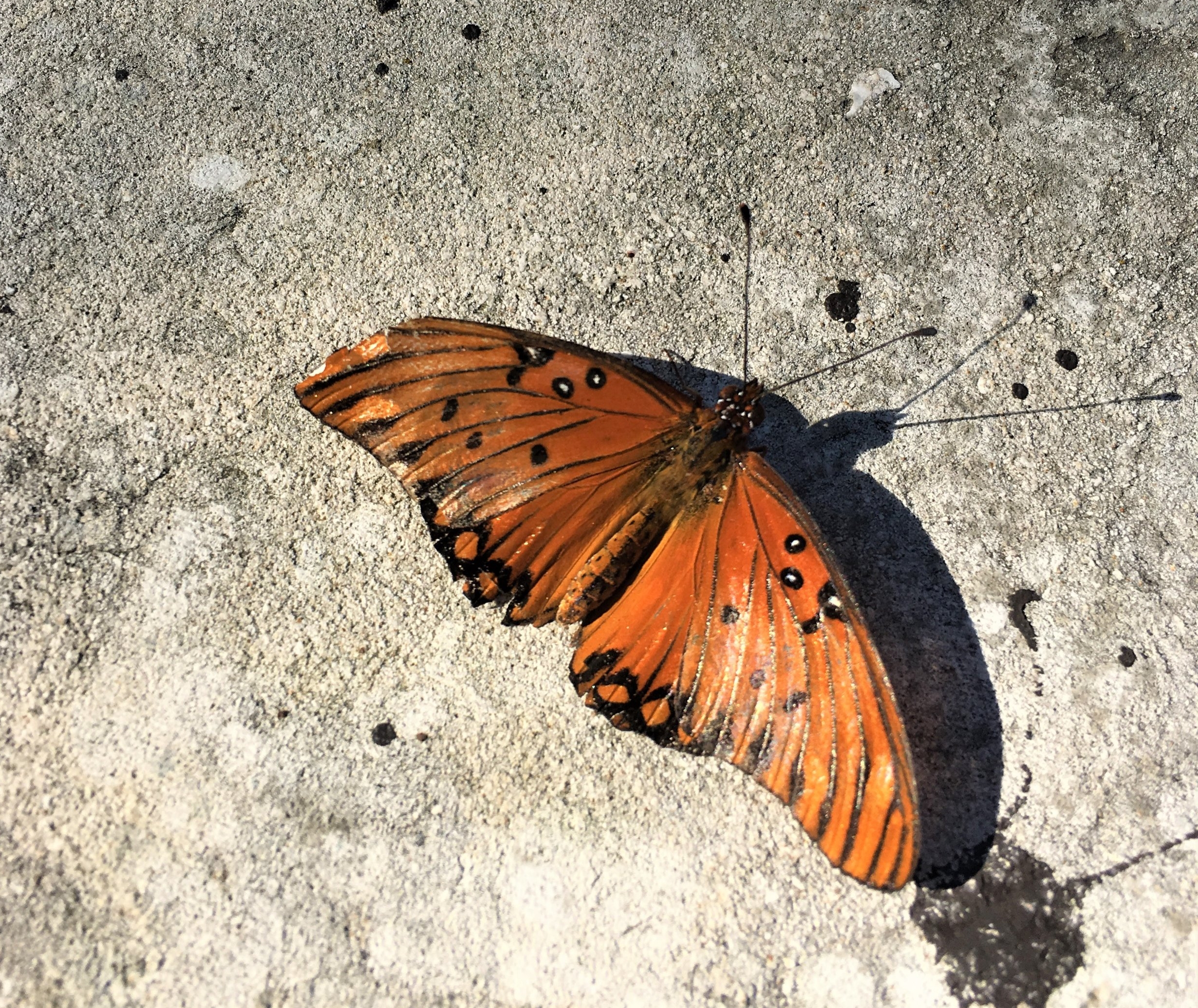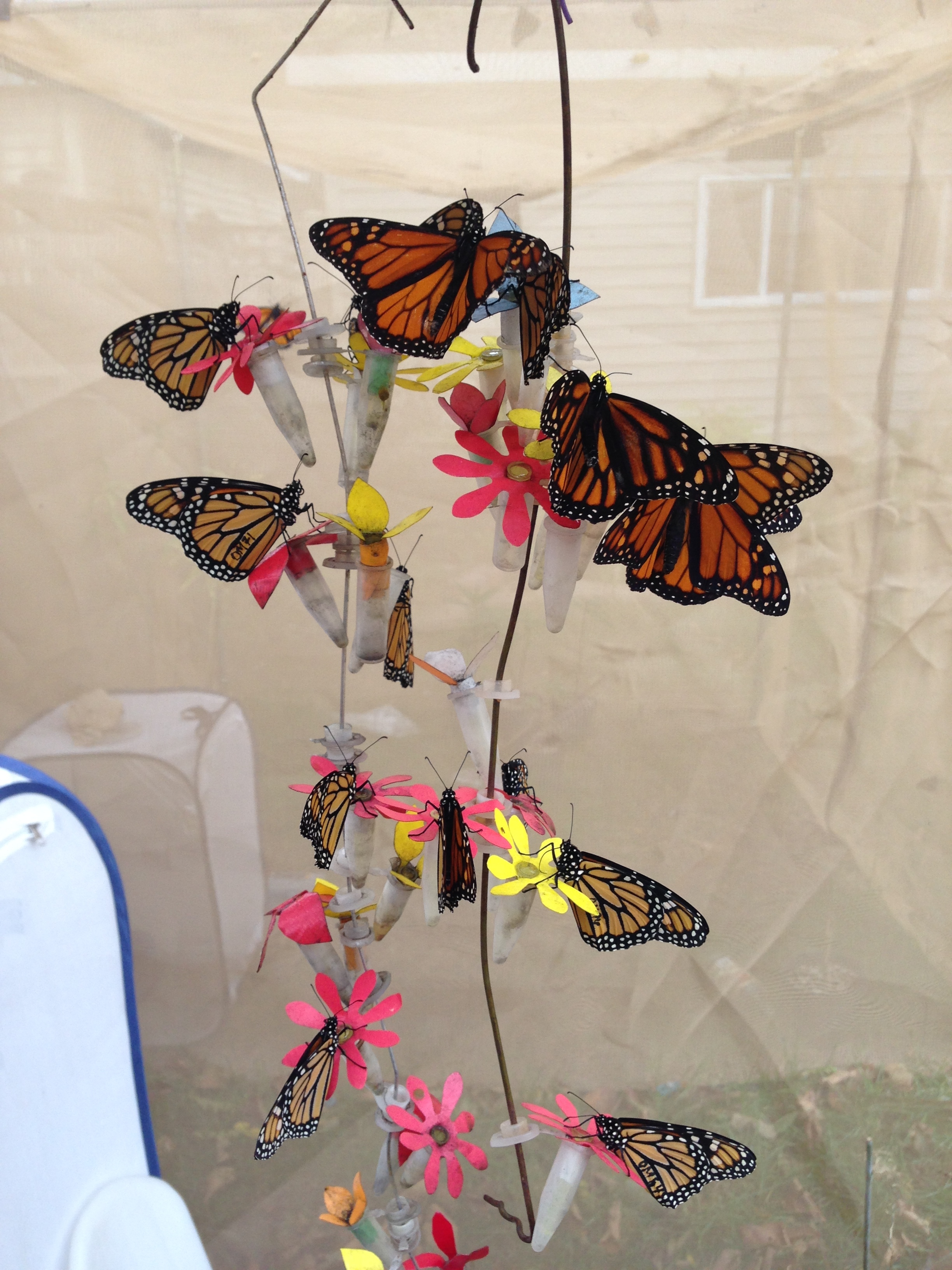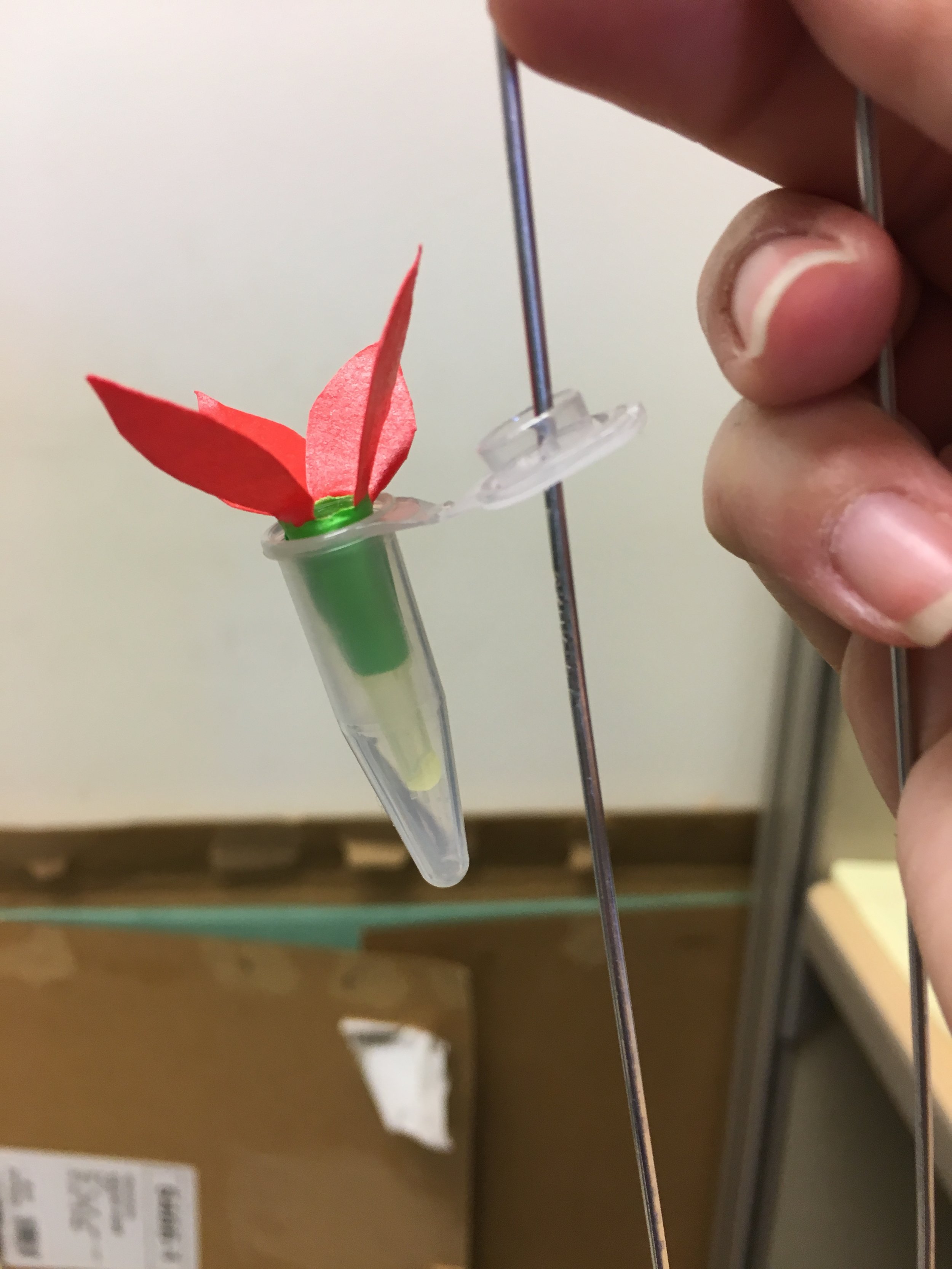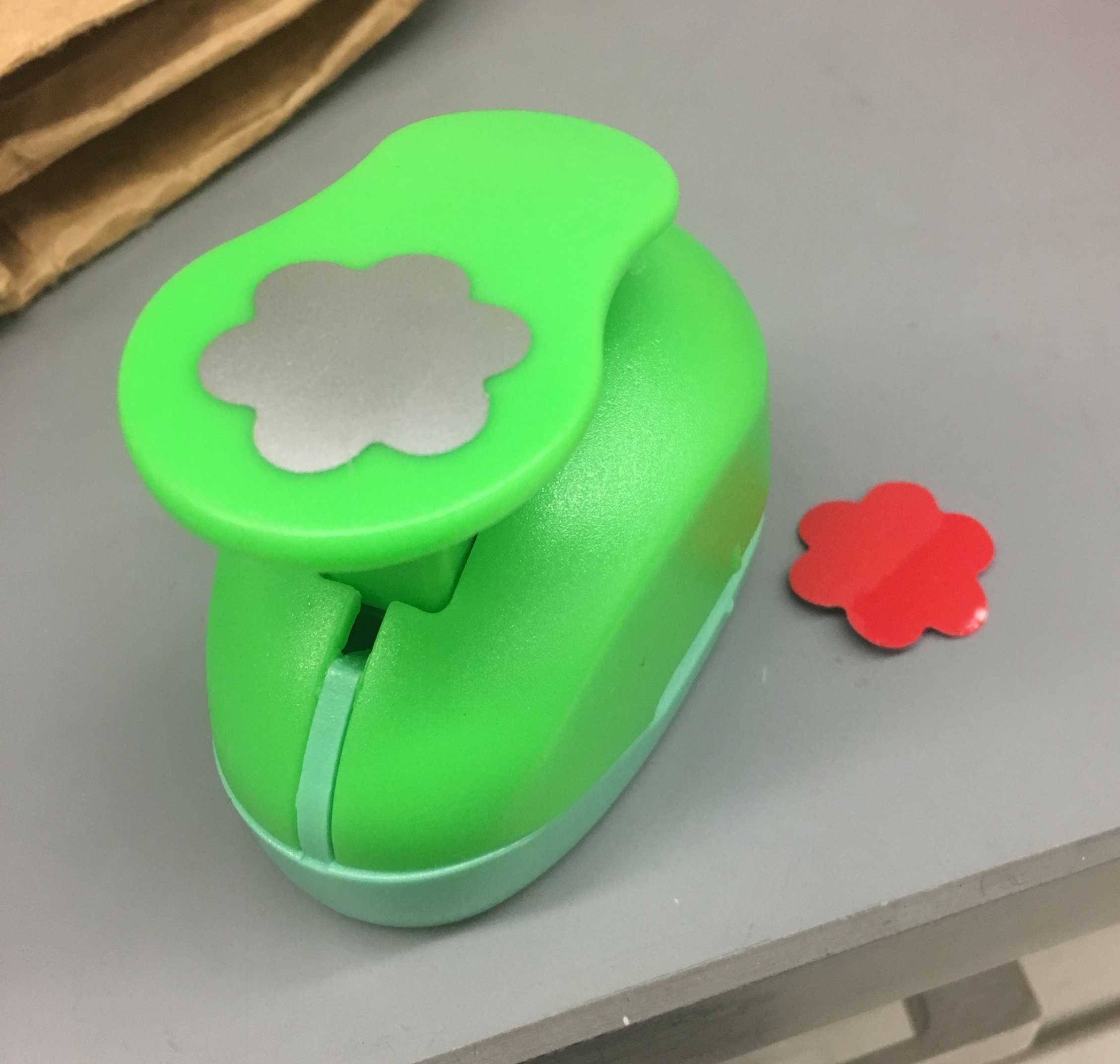Collection Trip to Texas
Reporting live from Texas!
Occasionally monarch butterflies bring me to Texas during either their fall migration to Mexico or their re-migration back to the U.S. and Canada in the spring. Texas is the last spot to find eastern monarchs in the fall before they cross the border. While you can find them all over Texas, I spend the majority of my time in Hill Country, an area that encompasses Austin and many smaller cities to the west including Kerrville, Llano, and Fredericksburg.
Catching an actively migrating monarch is tricky if not impossible. They fly relatively high in my experience - certainly higher than my 6 foot net can reach. So if I plan to collect, I focus on areas with many wildflowers. Monarchs feed over the course of their several month long migration south, and a feeding monarch is surprisingly easy to sneak up on.
I spend most of my time in places that look like this:
What you can't see are the numerous small cacti, grasses with painful burrs, and the large fire ant hills.
On the slow days, when monarchs are in short supply, I might turn my attention to other local butterflies. I justify netting these butterflies as honing my skills, but mostly I find it interesting to have a look at their beautiful wings up close. Hopefully you might enjoy them as well!
The following photos represent some of the most common larger species found in Texas, all of whom I then released. The smaller hairstreaks and blues are difficult to handle for photos while alive due to their small size so I avoided them altogether.
